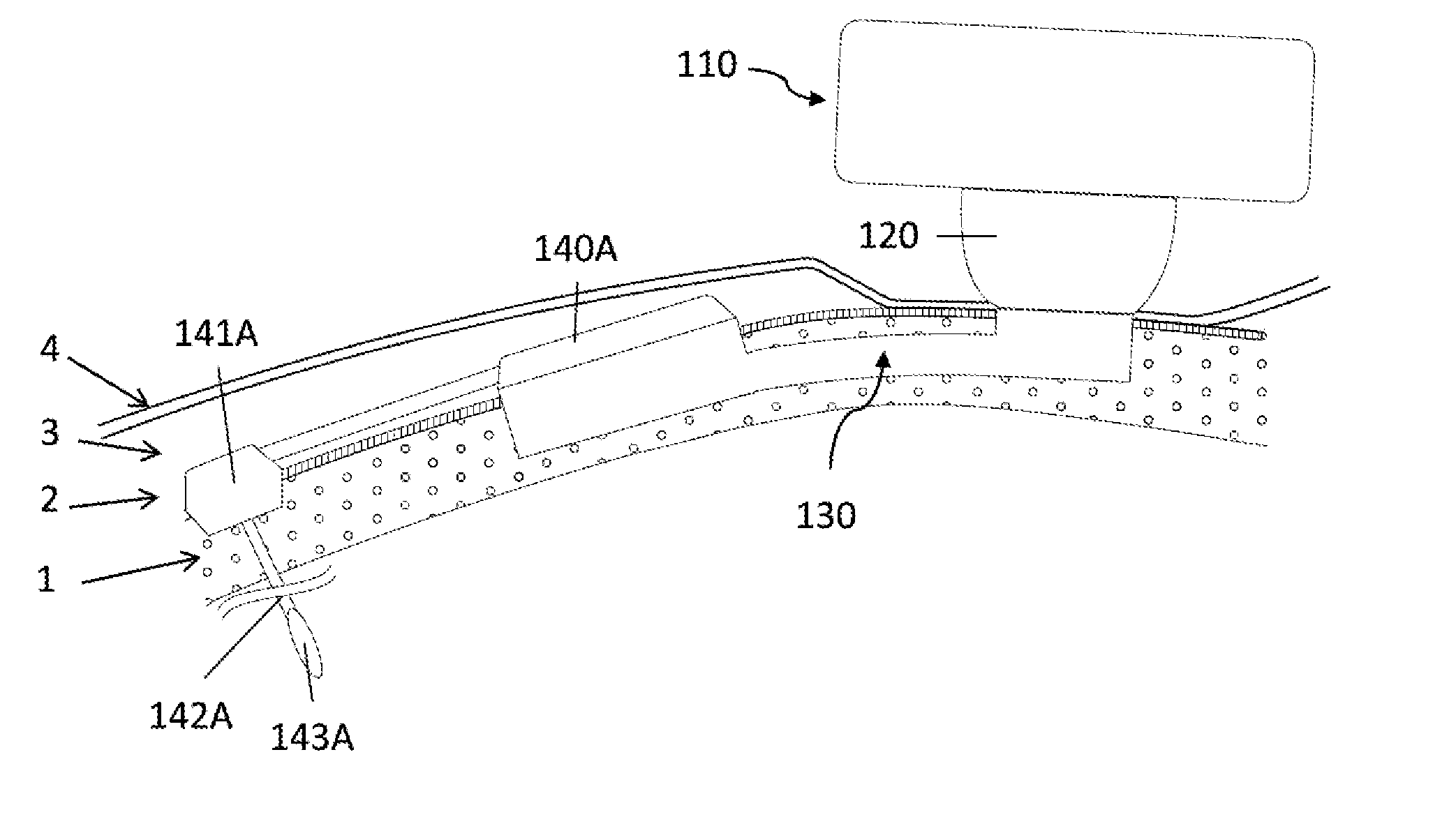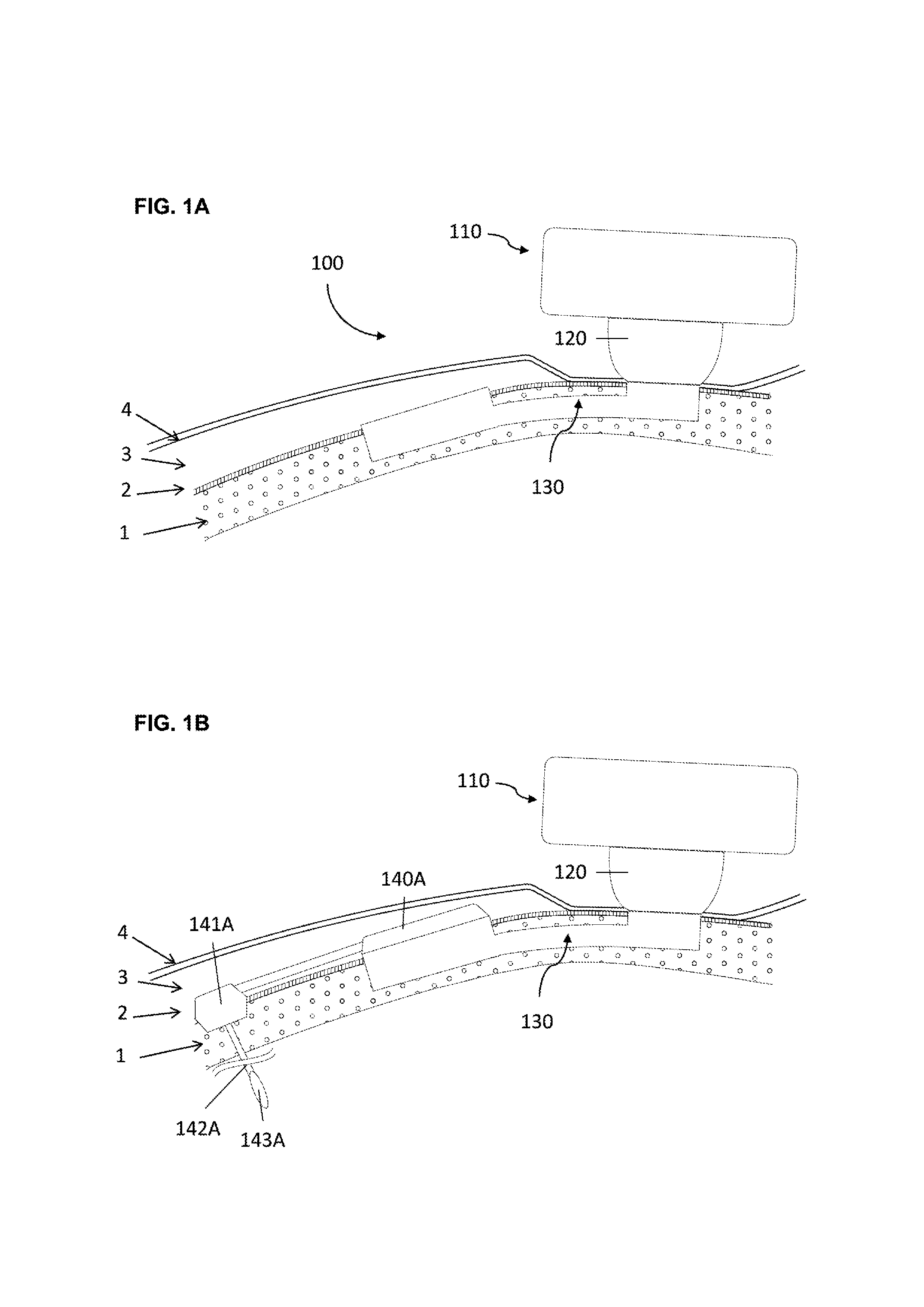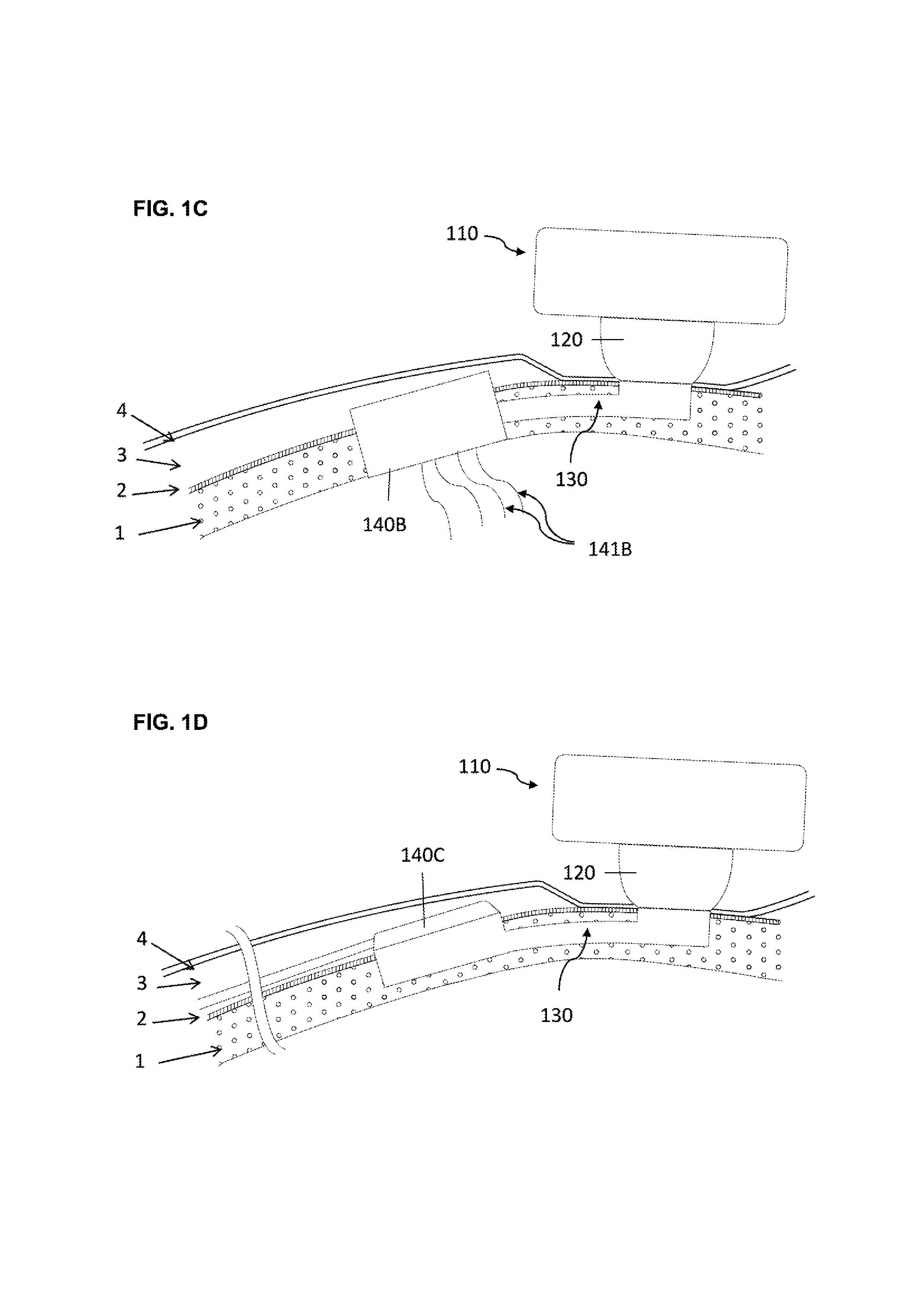Percutaneous connection assembly for active medical devices
a technology of percutaneous connection and active medical devices, applied in the direction of electrotherapy, intravenous devices, light therapy, etc., can solve the problems of increasing the risk of therapy, limiting the life of batteries, and the need to use expensive embedded components,
- Summary
- Abstract
- Description
- Claims
- Application Information
AI Technical Summary
Benefits of technology
Problems solved by technology
Method used
Image
Examples
first embodiment
[0058]In a first embodiment the implant consists in a base and a tubular extension.
[0059]In order to secure bone anchorage the implant contains one or several anchoring means, that are designed for osseointegration of the implant in the osseous structure. At least three anchoring systems are considered:[0060]Cams; one or several cams are extending from the implant. The cams are activated through strips so that the external surface of the cams protrudes into the osseous structure wall maintaining therein the implant in position.[0061]Screws; plates are extending from the implant or alternatively independent plates are placed over the implant by the surgeon during the surgery. The plate has at least one through orifice intended to receive an osteosynthesis screw which are used for anchoring the implant in the osseous structure.[0062]Hooking system; the surface of implant is characterized by projections protruding relative to the surface of the osseous structure so that the implant can...
second embodiment
[0064]In a second embodiment the base and one or several tubular extension are not monobloc.
[0065]In this second embodiment, at least two anchoring means can be considered:[0066]A threaded system, wherein the base is threaded and preferably spherical shaped so that it can be screwed into the osseous structure.[0067]A hooking system, wherein the surface of the base is characterized by projections protruding relative to the surface of the osseous structure so that the implant can be impacted into the osseous structure.
[0068]The percutaneous system is designed to maintain mechanically the external elements and offer a percutaneous connection that is resistant from pathogens penetration. Therefore the implant geometry allow to anchor the implant in the osseous structure (1), to reduce the dermis (3) around the percutaneous passage so that the epithelium (4) can be sutured on the periosteum (2) forming an epithelial seal against pathogens. To lower the risk of adverse events the implant ...
PUM
 Login to View More
Login to View More Abstract
Description
Claims
Application Information
 Login to View More
Login to View More - R&D
- Intellectual Property
- Life Sciences
- Materials
- Tech Scout
- Unparalleled Data Quality
- Higher Quality Content
- 60% Fewer Hallucinations
Browse by: Latest US Patents, China's latest patents, Technical Efficacy Thesaurus, Application Domain, Technology Topic, Popular Technical Reports.
© 2025 PatSnap. All rights reserved.Legal|Privacy policy|Modern Slavery Act Transparency Statement|Sitemap|About US| Contact US: help@patsnap.com



